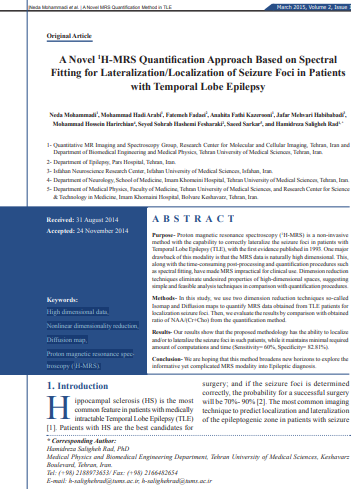A Novel 1H-MRS Quantification Approach Based on Spectral Fitting for Lateralization/Localization of Seizure Foci in Patients with Temporal Lobe Epilepsy
Abstract
Objective:
Proton magnetic resonance spectroscopy (1H-MRS) is a non-invasive method with the capability to correctly lateralize the seizure foci in patients with Temporal Lobe Epilepsy (TLE), with the first evidence published in 1993. One major drawback of this modality is that the MRS data is naturally high dimensional. This, along with the time consuming post-processing and quantification procedures such as spectral fitting, have made MRS impractical for clinical use. Dimension reduction techniques eliminate undesired properties of high-dimensional spaces, suggesting simple and feasible analysis techniques in comparison with quantification procedures.
Methods:
In this study, we use two dimension reduction techniques so-called Isomap and Diffusion maps to quantify MRS data obtained from TLE patients for localization seizure foci. Then, we evaluate the results by comparison with obtained ratio of NAA/(Cr+Cho) from the quantification method.
Results:
Our results show that the proposed methodology has the ability to localize and/or to lateralize the seizure foci in such patients, while it maintains minimal required amount of computations and time (Sensitivity= 60%, Specificity= 82.81%).
Conclusion:
We are hoping that this method broadens new horizons to explore the informative yet complicated MRS modality into Epileptic diagnosis.

